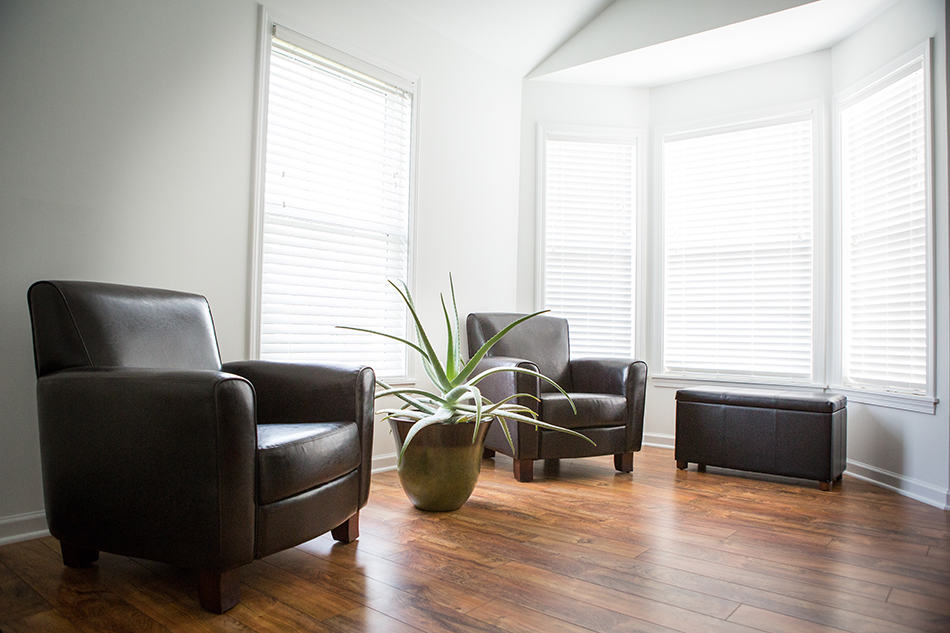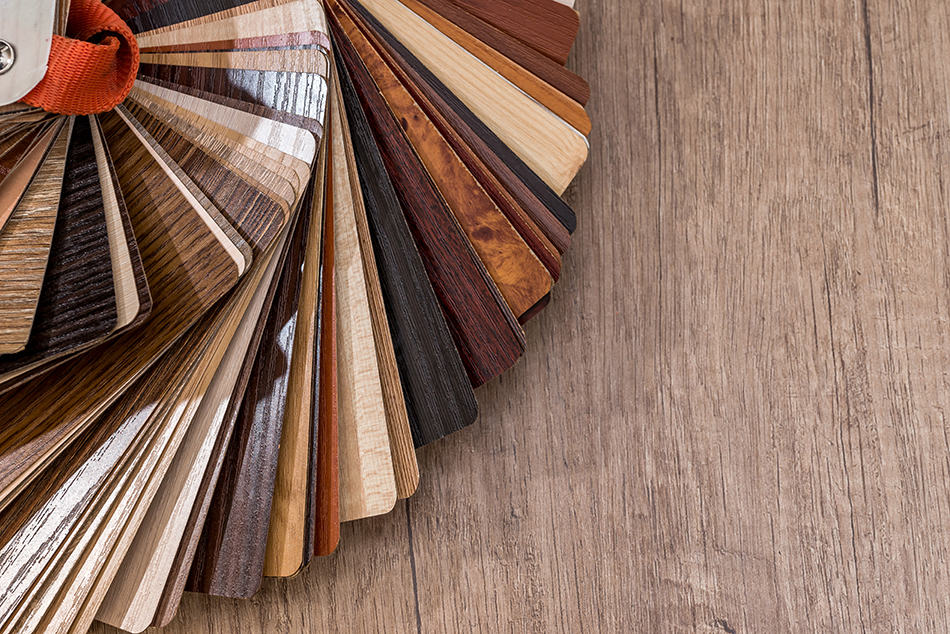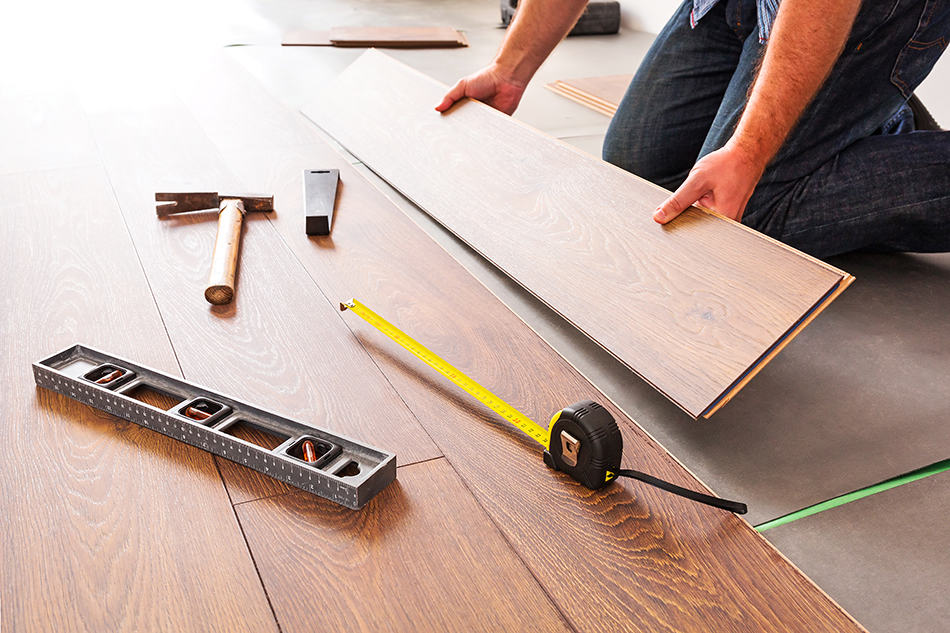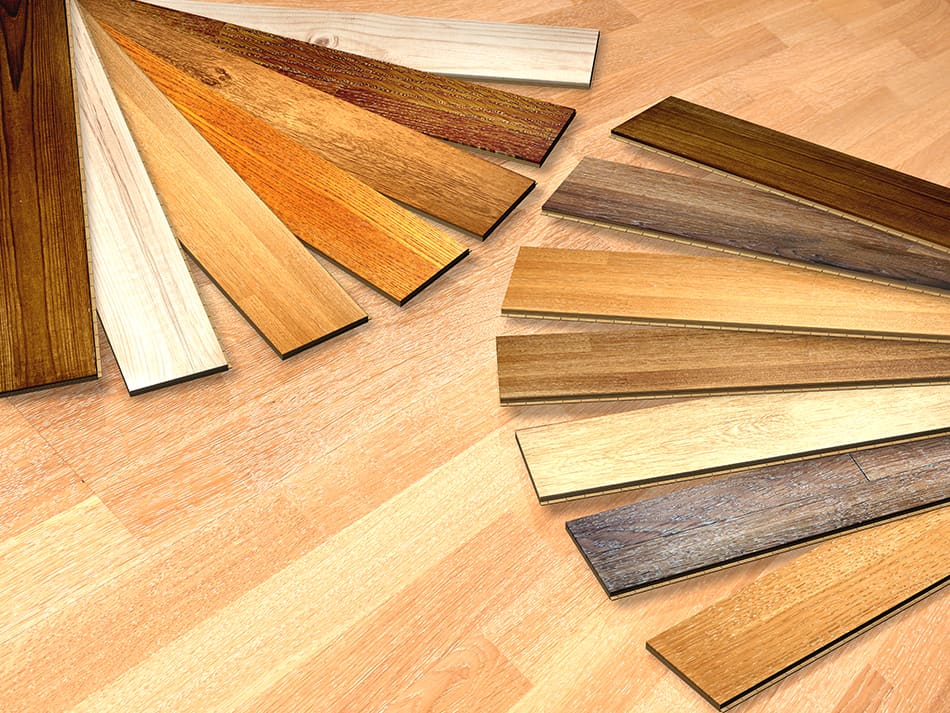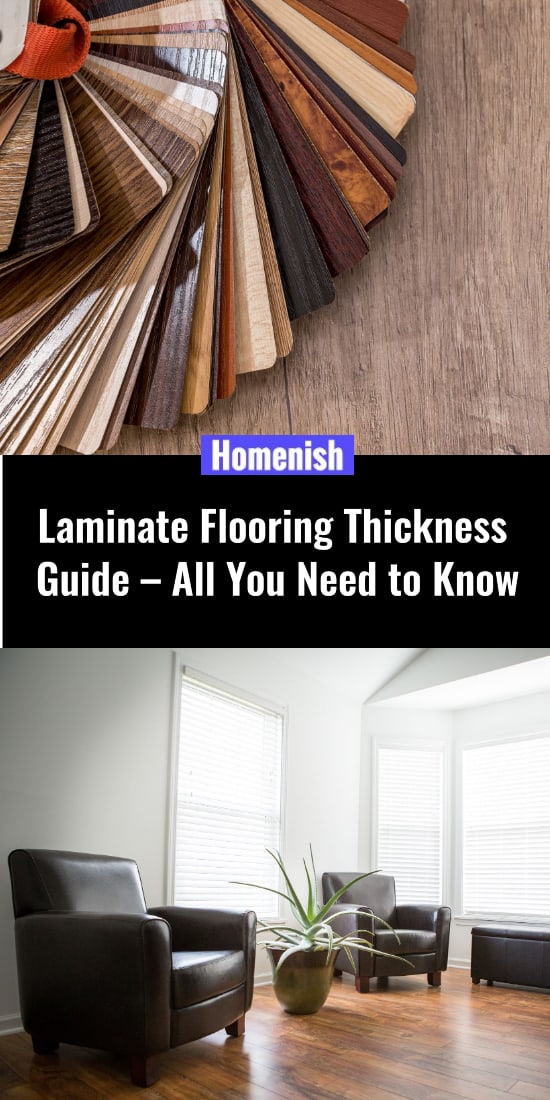First introduced in the 70s, laminate flooring comprises synthetic layers of materials that are engineered to mimic wood. This type of flooring has gained popularity over the years due to its affordability and durability, making it a better (and cheaper) alternative to real wood. Today’s laminate has evolved into a better quality material with more design options than ever before.
Choosing the right laminate flooring thickness can be a tough decision, with so many designs and prices that can affect your final budget. If you’re trying to figure out how to choose the best laminate thickness for your flooring, then you’re reading the right article.
Here we will provide you with everything you need to know about the different laminate flooring thicknesses, including their advantages and disadvantages.
How is Laminate Flooring Made?
Before I go into detail about the different laminate thicknesses, it is vital to know how this type of flooring is made.
There are four different layers that consist of:
- The bottom layer- This layer is made from melamine and protects the core layer from water penetration.
- The inner core layer- this layer is made from high-density fiberboard that includes resins for durability.
- The wear layer- this is the flooring’s surface on which you walk on. It is typically made of cellulose paper or aluminum oxide mixed with resins.
- The decorative layer- this part is bonded to the top of the core layer to give the plank its natural and flawless appearance.
All the four layers are pressed together under high heat in order to form the laminate or plank. The thickness we’ll be talking about refers to the inner core part. Keep reading to learn more.
What is Laminate Thickness?
Laminate thickness is measured in millimeters and defined by the core layer of the plank to the top. The cladding on which some laminate planks come with shouldn’t be included in measuring the thickness. So when you’re buying a laminate flooring, be sure to ask about its thickness without the padded or cladding layer.
Laminate Thickness Guide
The standard thickness of laminate flooring ranges from 6mm, which is the thinnest you can find, to 12mm, the thickest board in the market. Keep in mind, the thicker the plank, the more it will cost you, but this doesn’t necessarily mean it’ll be of better quality. That’s determined by the amount of wear layer the plank is made from as well as the materials used for its manufacturing.
Here is a quick list of the different laminate thicknesses in the market (in millimeters):
- 6mm
- 7mm
- 8mm
- 10mm
- 12mm
6mm laminate flooring: this is the thinnest option, and since it’s thin, the plank isn’t as durable. But when it’s installed over a sturdy subfloor like concrete, it can surprisingly last longer. But be sure to check the AC rating first to see if it meets your requirements as the higher the AC rating, the more durable the top layer of the board will be, (more about that later).
7mm laminate flooring: this is a slightly thicker laminate that again must be installed over a quality subfloor in order to remain sturdy.
8-12mm laminate flooring: these are the most popular flooring options since they provide more stability and last longer. While the 8mm thickness is enough to meet most people’s needs, some choose thicker laminates to create a sleeker and sturdier flooring.
Why Is Choosing Thickness for Laminate Important?
The thickness of laminate plank is actually more important than its appearance as this determines the feel of the flooring and the durability to some extent.
However, durability isn’t the most important factor when choosing the thickness of your laminate flooring. While a 6mm laminate is thicker than an 8mm, it doesn’t necessarily mean it’s of better quality. You should not just base your selection on the thickness, but a number of other factors can also determine the quality of your laminate flooring. These include:
AC rating: AC rating: this refers to the durability of the laminate flooring. The AC rating (Abrasion Criteria) is measured by taking into account the wear layer of the plank. In general, the higher the AC rating, the more durable the laminate will be. This system was first introduced by the European Producers of Laminate Flooring (EPLF) and it wasn’t long before it became an international measurement standard.
The EPLF standards include measuring such factors as resistance to moisture, stains, abrasion, impact, types of burns, and standing liquid. The AC ratings start at AC1 and go up to AC5.
- AC1 laminate: suitable for moderate use in bedrooms and closets
- AC2 laminate: suitable for medium use in living rooms and dining rooms
- AC3 laminate: suitable for heavy use in residential and moderate use in commercial areas
- AC4 laminate: suitable for use in heavier traffic areas for both residential and commercial premises
- AC5 laminate: only suitable for heavy traffic areas in commercial premises
Most manufacturers recommend homeowners to purchase laminate flooring with an AC3 or higher rating.
Other important qualities: Aside from the AC rating, there are other factors that must be considered when choosing quality laminate flooring. These include:
- A strong and dense core layer
- Treated edges that snugly snap together and remain locked
- A professionally designed decorative layer
- Ultraviolet treatment to prevent fading
- Building code effectiveness ratings (or ISO ratings) for product quality
With that in mind, let’s take a look at the main benefits and drawbacks of thicker and thinner laminate flooring.
Advantages of Thick Laminate Flooring
- Generally, the thicker the laminate, the greater its advantages
- Thick laminate flooring looks and feels more like solid hardwood flooring rather than thin plastic boards
- It is easier to install thicker laminate, thus making it an ideal DIY project. But why is this? Thicker laminate is more forgiving on slightly unlevel subfloors and they do a better job of hiding floor imperfections. Since levelness is an important part of successful floor installation, thicker laminate boards don’t feel and look like floating floors unlike their thinner versions
- Thick laminate floor boards provide better noise insulation. If you drop an object on these floors, the sound will be more difficult to travel when compared to their thinner counterparts. This means thicker boards are more impact resistant
- The locking system of thicker laminate boards is stronger
- Thicker boards allow for more detailed designs
- Thick laminate boards (12mm) are less prone to warping and moisture problems
- They can also withstand foot traffic much better than thinner boards.
Disadvantages of Thick Laminate Flooring
- Not environmentally friendly as thicker laminate needs more materials like MDF
- Higher price
Advantages of Thin Laminate Flooring
- Ideal for budget projects
- Requires fewer materials, thus making it a greener choice
- More durable if installed over flat cement floors
- More affordable than thick laminate
Disadvantages of Thin Laminate Flooring
- Requires a very stable subfloor
- Less durable
- Low impact resistance
- A plastic feel underfoot
Which Laminate Flooring Thickness is Best for Me?
Let’s start with the thinnest laminate and work our way up.
6mm is the cheapest option, but is it worth buying? The simple answer is no. While thinner laminate may be more environmentally friendly, when it comes to durability and quality, you should consider 8mm or higher.
So that brings us to the question, which laminate flooring thickness is better? 8mm, 10mm, or 12mm? While the 2mm difference between 8mm and 10mm or 10mm and 12 mm doesn’t sound like much, it’s still a 25 percent increase in material.
Yes, 8mm can be just as durable as 10mm, but if you choose both, you’ll notice how loud the 8mm laminate is under your feet. Plus it will feel like walking on plastic. 8mm laminates tend to split easier than 10mm planks. In other words, you’ll like walking on 10mm laminate more.
But what about 12mm? This is the thickest laminate flooring you can find with better quality, not as much noise, and a higher price. 12mm laminates are very similar to hardwood flooring as far as feel and appearance are concerned, but if you don’t have the budget to install this floor, opt for 8mm instead.
You may argue that 12mm laminate is more impact resistant and easier to install, but you’ll have the same problems with this flooring if your subfloor isn’t up to standard. Perhaps the biggest advantage of going thicker is the aesthetic. 12mm laminates boast cooler designs and make a smarter choice for luxury or modern homes. But of course, it all depends on your preferences and needs.
Conclusion
The decision on choosing your laminate flooring thickness ultimately depends on your own specific needs, but as a rule of thumb, you should first consider your budget. Remember, the thicker the laminate, the more it will cost you. Another factor to consider is the level of noise that your flooring will produce when it’s walked on.
If you live in an apartment, for example, it’s best to invest in a thicker laminate of at least 8mm. By taking all the mentioned advantages and disadvantages of thick and thin laminate flooring into account, you’ll be able to decide what works best for your situation.
